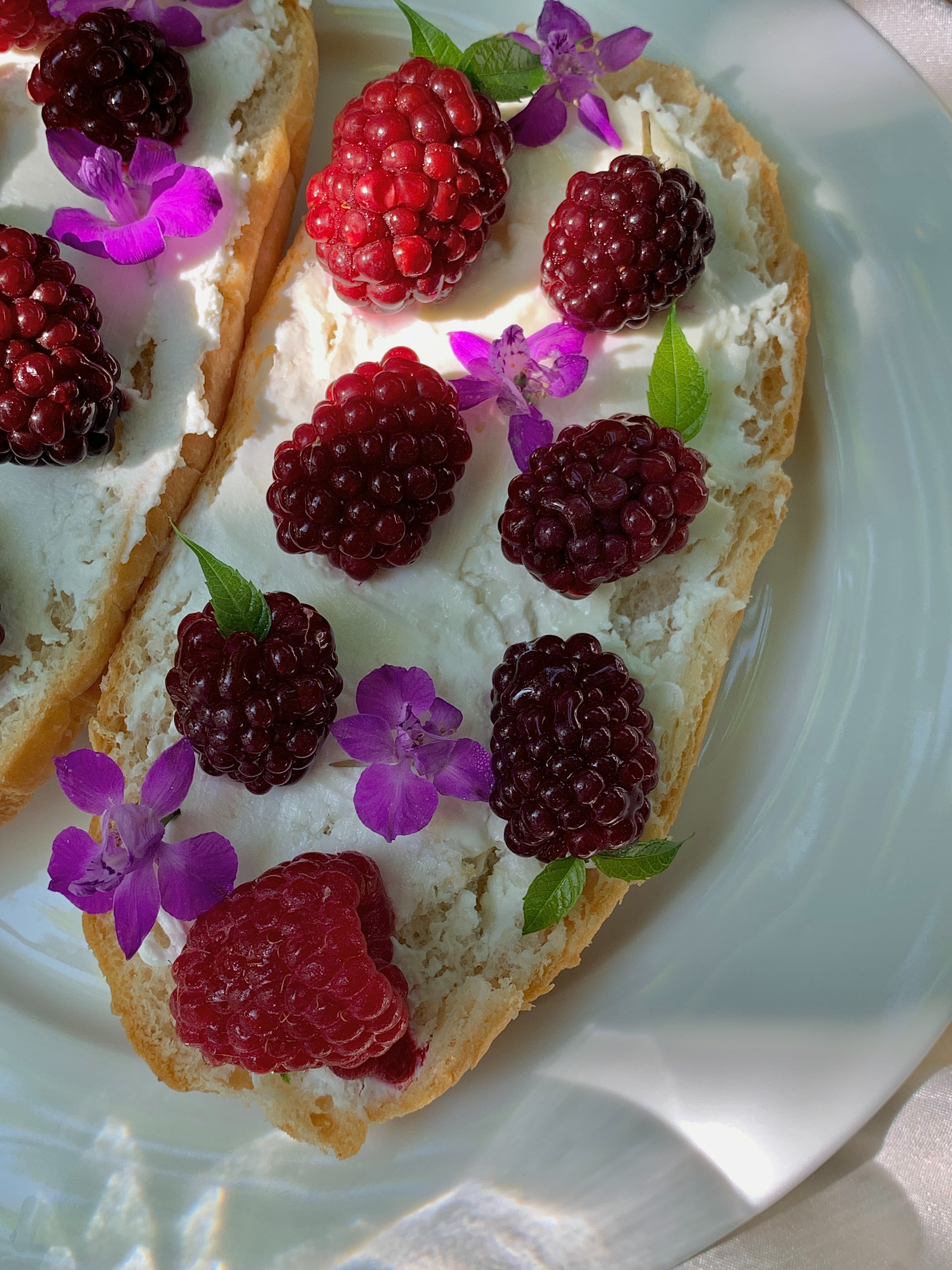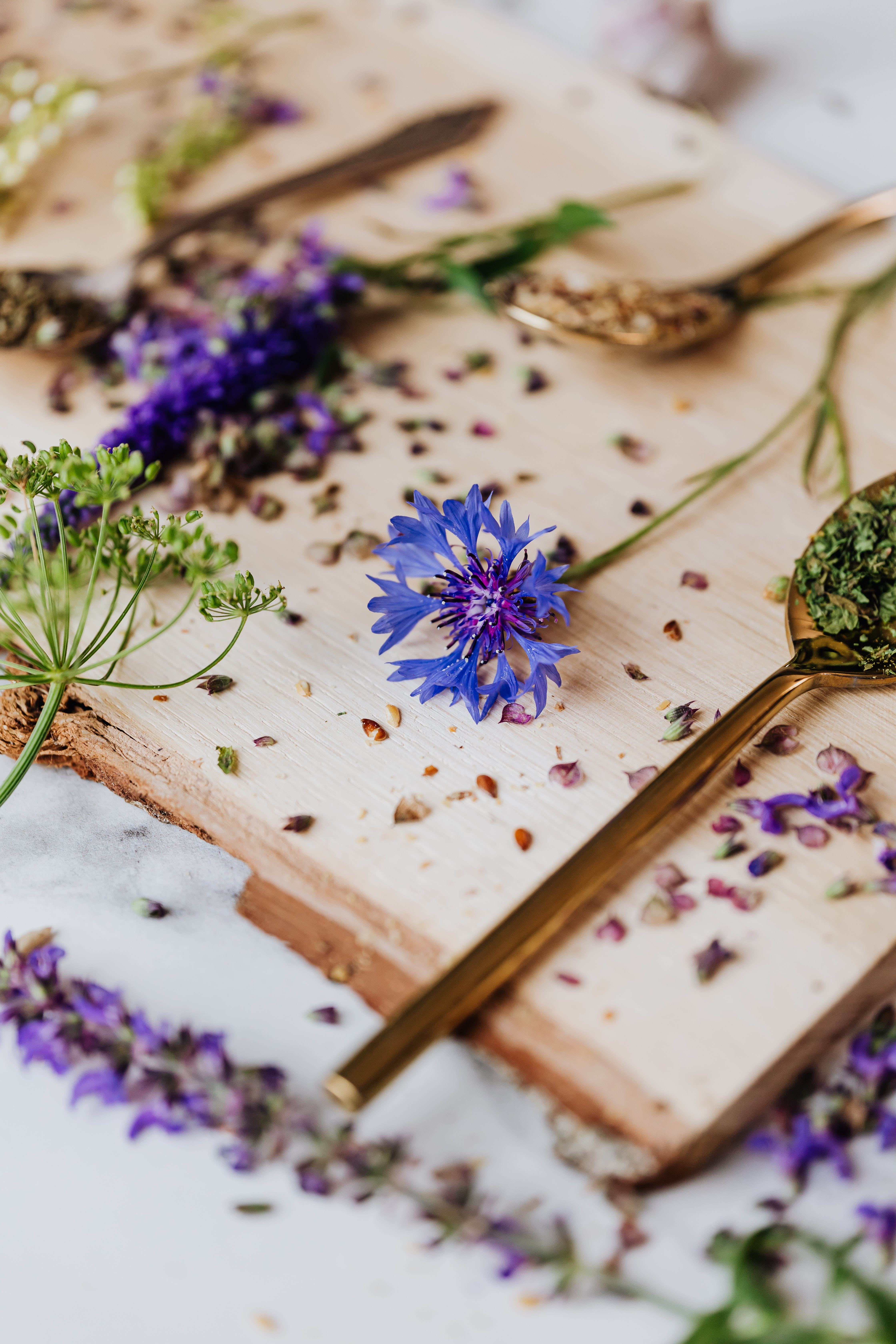Edible Flowers and the World of Culinary Creations
Posted by Sarah Beyers on May 24th 2023
In the world of gastronomy, experimenting with flavors is an exciting endeavor. While traditional ingredients dominate our palates, incorporating floral elements into dishes adds a unique twist. In this blog post, we'll delve into the fascinating world of scented geranium flowers and leaves, peony petals, snapdragons, wild violets, arugula flowers, and cornflowers, which are all currently blooming and available for purchase at our farm. We'll explore their distinctive tastes and discover how they can be paired with various dishes to create culinary delights.

Scented Geranium Flowers and Leaves:
- Scented geraniums offer a delightful range of flavors, from citrusy and minty to floral and spicy. The flowers can be used as a garnish or infused in syrups, while the leaves are often used for teas and desserts. Lemon-scented geraniums are perfect for lemon-flavored cakes, while rose-scented geraniums can be added to delicate pastries or used to infuse creams and custards.
Peony Petals:
- Peony petals possess a subtly sweet and floral taste, making them a wonderful addition to culinary creations. Their delicate flavor pairs well with light and creamy desserts, such as panna cotta or fruit tarts. You can also use peony petals to infuse syrups for cocktails or floral teas, providing an elegant and fragrant twist.
Snapdragons:
- Snapdragon flowers have a mildly sweet and slightly tangy flavor, reminiscent of fresh apple or cucumber. These vibrant blooms are excellent in salads, adding a pop of color and a refreshing taste. Combine snapdragons with crisp greens, citrus slices, and a light vinaigrette to create a visually stunning and flavor-packed salad.
Wild Violets:
- Wild violets offer a delicate, floral flavor that's both sweet and slightly perfumed. They can be used in various culinary applications, such as infused vinegars, syrups, and jellies. For an elegant touch, freeze wild violets into ice cubes and add them to beverages or use them as a decorative element in desserts like sorbets or cakes.
Arugula Flowers:
- Arugula flowers share the peppery and nutty flavors of their leaves, but with a milder intensity. They are perfect for enhancing salads, adding both visual appeal and a pleasant peppery note. Combine arugula flowers with fresh greens, tomatoes, goat cheese, and a light balsamic dressing to create a delightful balance of flavors.
Cornflowers:
- Cornflowers possess a subtly sweet and clove-like flavor, making them a versatile addition to various dishes. These vibrant blue flowers can be used to garnish salads, desserts, or cocktails. Additionally, they can be candied or crystallized to create edible decorations for cakes and pastries.

Embracing floral flavors in culinary creations introduces a whole new dimension of taste and aesthetics. Scented geranium flowers and leaves, peony petals, snapdragons, wild violets, arugula flowers, and cornflowers each bring their unique characteristics to the table. Experimenting with these floral ingredients opens up a world of possibilities, from delicate desserts to vibrant salads and refreshing beverages. So, go ahead and embark on a culinary adventure, exploring the delightful tastes these blooms have to offer. Bon appétit!
Juniper Culinary Apothecary teas, spice blends and other food products are not and shall not be considered food supplements in any circumstances. They do not ensure or supplement the daily vitamin intake and do not substitute a healthy diet.

